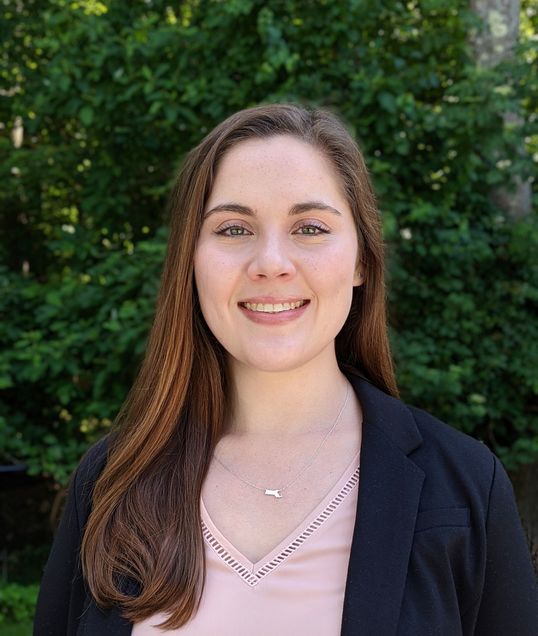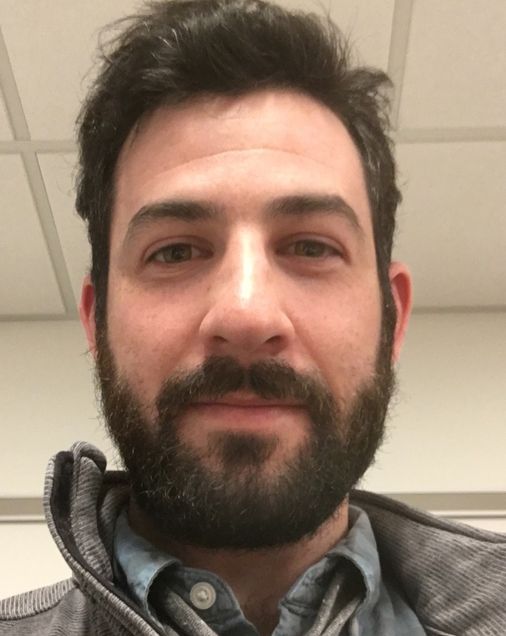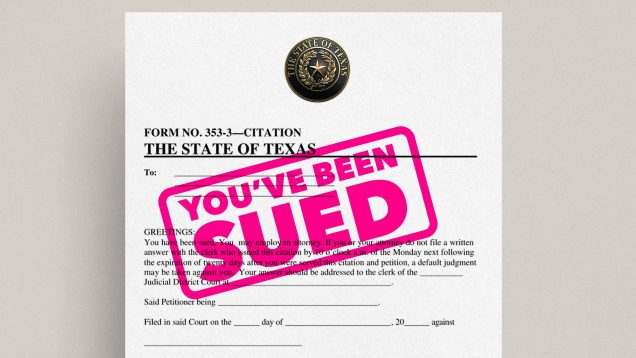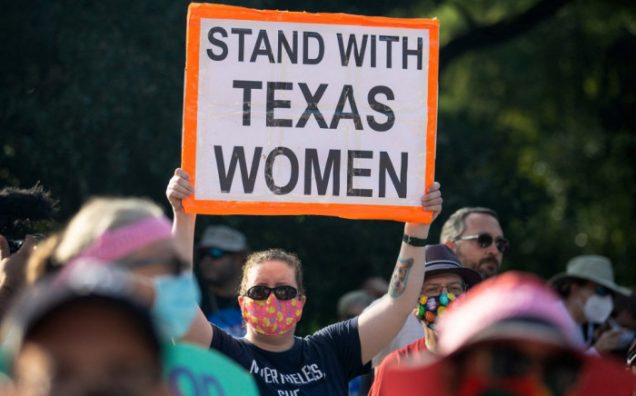Category: Administrative Law
A Legal Tug-of-War between the Massachusetts State Auditor and the Legislature
The Commonwealth of Massachusetts finds itself at a constitutional crossroads as the legal tug-of-war unfolds between the State Auditor and the Legislature. In August 2023, the Massachusetts State Auditor, Diana DiZoglio, sent a letter to Attorney General Andrea Campbell stating she was conducting an audit of both the Massachusetts Senate and House of Representatives (the Legislature). This audit would include “budgetary, hiring, spending, and procurement information, information regarding active and pending legislation, the process for appointing committees, the adoption and suspension of legislative rules, and the policies and procedures of the Legislature.” However, Campbell responded that the auditor cannot unilaterally probe the Legislature without its consent. In this case, both Ronald Mariano, Speaker of the Massachusetts House of Representatives, and Karen Spilka President of the Massachusetts Senate rejected DiZoglio’s audit. They reasoned that the financial documents of the legislature are made public and the other information DiZoglio is requesting violates the separation of powers. This conflict is not new but rather a historical tug-of-war between the branches of government and the delegation of powers. This debate requires a comprehensive analysis of statutory powers, historical positions, and constitutional considerations.
 DiZoglio is asserting her power to conduct this audit under the State Auditor’s enabling statute, M.G.L. c. 11 § 12. Section 12 directs the State Auditor to audit “accounts, programs, activities and functions directly related to the aforementioned accounts of all departments, offices, commissions, institutions and activities of the commonwealth, including those of districts and authorities created by the general court and including those of the income tax division of the department of revenue.” The language that Campbell focused on was the meaning of “departments” and whether the Legislature was intended to be included in that term. Campbell scrutinized various cases and the texts of other statutes using this term concluding that “department” is more restricted than it appears. From a historical perspective, the term “department” appeared in the text of the statute in 1920 at the same time the Massachusetts’s general laws were enacted and when the Executive Branch was reorganized into “departments.” Upholding the precedent of her predecessors, Campbell adopted the view that “the word ‘department’ in statutes such as these should in general encompass only executive branch departments.”
DiZoglio is asserting her power to conduct this audit under the State Auditor’s enabling statute, M.G.L. c. 11 § 12. Section 12 directs the State Auditor to audit “accounts, programs, activities and functions directly related to the aforementioned accounts of all departments, offices, commissions, institutions and activities of the commonwealth, including those of districts and authorities created by the general court and including those of the income tax division of the department of revenue.” The language that Campbell focused on was the meaning of “departments” and whether the Legislature was intended to be included in that term. Campbell scrutinized various cases and the texts of other statutes using this term concluding that “department” is more restricted than it appears. From a historical perspective, the term “department” appeared in the text of the statute in 1920 at the same time the Massachusetts’s general laws were enacted and when the Executive Branch was reorganized into “departments.” Upholding the precedent of her predecessors, Campbell adopted the view that “the word ‘department’ in statutes such as these should in general encompass only executive branch departments.”
DiZoglio contends that the Auditor’s Office has a precedent for auditing the Legislature, citing historical reports conducted on various agencies. The Auditor’s Office originally was charged with collecting annual reports on various government agencies that was eventually transferred to the Office of the Comptroller when that office was created 1922. The pre-1923 reports provided a broad overview of the financial information specifically detailing how the Legislature could reduce its expenditures. Campbell pointed out that the information that the Auditor is currently requesting goes beyond the limited scope and the functions the Auditor currently possesses. The reports from 1923-1971 were once again narrowly construed to certain entities “under the purview of the Legislature,” but not the Legislature as whole as DiZoglio is attempting to do now. From 1972-1990, the Auditor conducted audits of three specific legislative entities and reporting on their expenditures, appropriations, and other miscellaneous income. In 1978, the Senate stopped complying with the Auditor’s audits after the Massachusetts Supreme Judicial Court decided Westinghouse Broadcasting Co. v. Sergeant-at-Arms of General Court (Mass. 1978). In Westinghouse, the Court held that “the records generated by the Legislature could be made available to outsiders only at the discretion of the House and Senate leadership.” The Senate cited this holding to restrict the Auditor’s access to certain records. From 1990 until 2023, the Auditor conducted three narrow audits of legislative operations: addressing overpayments to a court officer in 1992, IT-related controls by the Sergeant-at-Arms in 2002, and Legislative Information Services in 2006. In contrast, the Auditor’s proposed broad audit will scrutinize core legislative powers rather than specific issues or entities.
 The enforcement of orders for document production against the Legislature raises serious constitutional questions related to the separation of powers. These concerns were raised by former State Auditors, Suzanne Bump and A. Joseph DeNucci. If the Auditor moves forward with the audit, it would require the Superior Court to enforce those orders against the Legislature’s consent. As provided by the Massachusetts Constitution, the legislative branch has the authority to establish its own rules and proceedings. Thus, if the Judiciary enforced the audit against the Legislature, it would be interfering directly with the Legislature’s core functions. Although Attorney General Campbell did not go so far as to define the extent of the constitutional limitations, it did acknowledge the potential for such an issue to arise.
The enforcement of orders for document production against the Legislature raises serious constitutional questions related to the separation of powers. These concerns were raised by former State Auditors, Suzanne Bump and A. Joseph DeNucci. If the Auditor moves forward with the audit, it would require the Superior Court to enforce those orders against the Legislature’s consent. As provided by the Massachusetts Constitution, the legislative branch has the authority to establish its own rules and proceedings. Thus, if the Judiciary enforced the audit against the Legislature, it would be interfering directly with the Legislature’s core functions. Although Attorney General Campbell did not go so far as to define the extent of the constitutional limitations, it did acknowledge the potential for such an issue to arise.
The Attorney General’s Office holds firm that the Auditor’s current authority does not extend to auditing the Legislature without consent. In response, the Auditor sought to ask the public whether she has the authority to audit the legislature through a question on 2024 ballot. DiZoglio’s proposal received over 100,000 signatures and is on track to be included on the 2024 state-wide ballot. First, however, the Legislature reviews the proposal, with the Judiciary Committee holding a tense hearing in March 2024. DiZoglio testified,
“Our office provides a resource to this commonwealth. Contrary to the narrative that some legislators and their supporters have been spinning, [my] office is not the FBI. We do not go in and raid people’s offices. We do not have the ability to toss desks. Our staff conducts performance audits. Audits. The amount of opposition to audits from this body is deeply, deeply disturbing and concerning on so many levels.”
However, Jeremy Paul, a law professor at Northeastern University, testified that the courts may invalidate the new law if the voters approve it in November.
“I submit that the power to audit may well turn out to be the power to destroy. It’s one thing to push for greater transparency in legislative operations so that the public is given more information. It’s entirely another to give an elected official inside the elected branch discretion to decide which legislators can be called to account for what reasons and when.”
Thus, the saga continues, serving as a constant reminder of the delicate balance that needs to be struck within our democratic system between responsibility, transparency, and the preservation of constitutional principles.
 Abigail Rooney West anticipates graduating from Boston University School of Law in May 2024.
Abigail Rooney West anticipates graduating from Boston University School of Law in May 2024.
The Push and Pull of Municipal Fossil Fuel Bans in Massachusetts
In 2019, Brookline, Massachusetts became the first municipality outside of California to ban fossil fuels in new construction. The move was part of a growing movement among cities and towns to ban fossil fuel infrastructure, such as hookups for oil or natural gas use, in newly constructed buildings. Fossil fuel bans of this nature typically aim to curb emissions from energy use in buildings, which in many municipalities is the leading source of emissions, through electrification. Electricity use in buildings produces less carbon emissions than burning oil and gas directly and those emissions will continue to decrease as more renewable resources are added to the electricity grid.
 Unfortunately for Brookline, the Attorney General’s Municipal Law Unit disapproved of Brookline’s fossil fuel ban in 2020, finding that the ban was preempted by state law. Not easily deterred, Brookline passed a new set of by-laws in 2021. These by-laws were worded differently than the first attempt, framed as requirements for building permits rather than an outright ban. However, these by-laws fared no better than the first ban, and the Attorney General issued a decision in 2022 once again disapproving of the by-law amendments because they were preempted by Chapter 40A (regulating municipal zoning), Chapter 164 (regulating natural gas), and the State Building Code.
Unfortunately for Brookline, the Attorney General’s Municipal Law Unit disapproved of Brookline’s fossil fuel ban in 2020, finding that the ban was preempted by state law. Not easily deterred, Brookline passed a new set of by-laws in 2021. These by-laws were worded differently than the first attempt, framed as requirements for building permits rather than an outright ban. However, these by-laws fared no better than the first ban, and the Attorney General issued a decision in 2022 once again disapproving of the by-law amendments because they were preempted by Chapter 40A (regulating municipal zoning), Chapter 164 (regulating natural gas), and the State Building Code.
Meanwhile, in the time between when Brookline passed its first fossil fuel ban and when the Attorney General issued its decision about the legality of the second ban, dozens of other Massachusetts municipalities became interested in enacting fossil fuel bans of their own. Some of these municipalities submitted home rule petitions to the Massachusetts legislature, asking the legislature to grant their individual municipalities the authority to ban fossil fuel infrastructure on a case-by-case basis. State Representative Tami Gouveia and State Senator Jamie Eldridge of Acton also introduced a bill during the 2021–2022 session that would have granted every municipality in the commonwealth the power to adopt a requirement for all-electric construction without passing and submitting a home rule petition.
The result was a compromise: The legislature passed An Act Driving Clean Energy and Offshore Wind in August of 2022. The law, among other things, authorized a pilot program enabling up to ten cities and towns to adopt and amend ordinances or by-laws to require new building construction or major renovation projects to be fossil fuel-free. The Massachusetts Department of Energy Resources (DOER) was tasked with developing the pilot program and deciding which municipalities would participate. Among requirements for cities and towns seeking to join the pilot program for fossil fuel bans is having a minimum of ten percent affordable housing.
DOER has already received more than ten applications from Massachusetts cities and towns wishing to join the pilot program, but under the draft regulations DOER published in February of this year, municipalities would have to wait until early 2024 at the earliest to implement their bans. This long period for implementation has disturbed members of the legislature who championed and passed the pilot program into law. Senator Michael Barrett, the Senate Chair of the Joint Committee on Telecommunications, Utilities and Energy recently told GBH News that the proposal would “delay the entire process much longer than the Legislature ever imagined.” Pressure from both the legislature and the municipalities seeking to join the pilot program will likely continue to mount as the group of cities and towns now includes the City of Boston, the largest city in the commonwealth. With advocacy groups concerned that the delay combined with limiting the pilot program to ten municipalities will hold the commonwealth back from meeting its goal of reaching net zero carbon emissions by 2050, legislators may be reconsidering the more conservative approach they took by passing the pilot program rather than blanket approval for cities and towns to enact fossil fuel bans.
Opponents and those concerned about the impacts of fossil fuel bans, however, may be heartened by the delay. Governor Charlie Baker considered vetoing the energy bill because of the fossil fuel ban pilot program because of the possibility that banning fossil fuels in new construction might make it more difficult to build affordable housing. In a state experiencing what many characterize as an affordable housing crisis, this concern is not uncommon, the thought process being that if there is inconsistency in requirements for developers between municipalities, developers, especially developers of affordable housing, will prioritize projects in communities with fewer or less expensive requirements. Many of the cities and towns that have already stepped forward to join the pilot program are fairly wealthy and may not be as concerned with the affect of a fossil fuel ban on the costs of housing development.
 Yet, there may still be reason for optimism. As an example of what may be possible in a future that includes municipal fossil fuel bans, the Town of Brookline recently approved an affordable housing project that will be powered exclusively by electricity. In addition, Boston Mayor Michelle Wu recently signed an executive order that bans fossil fuel use in new city-owned buildings and in major renovations of municipal buildings. Even without municipal fossil fuel bans in place, some developers, including affordable housing developers, in Massachusetts communities are choosing to build fossil fuel-free.
Yet, there may still be reason for optimism. As an example of what may be possible in a future that includes municipal fossil fuel bans, the Town of Brookline recently approved an affordable housing project that will be powered exclusively by electricity. In addition, Boston Mayor Michelle Wu recently signed an executive order that bans fossil fuel use in new city-owned buildings and in major renovations of municipal buildings. Even without municipal fossil fuel bans in place, some developers, including affordable housing developers, in Massachusetts communities are choosing to build fossil fuel-free.
The future of fossil fuel-free building in Massachusetts is uncertain. The legislature may choose to take a more aggressive approach than it did during the last session, or it may wait to see how DOER’s implementation of the pilot program goes, leaving Massachusetts cities and towns and developers to continue to innovate on their own. States are often called “laboratories of democracy,” but when it comes to issues like climate change, where municipalities acting individually may be able to make a large impact, that label may better suit cities and towns as they try again and again to form creative solutions where their state legislatures fall short.
 Hayley Kallfelz graduated with a juris doctor from Boston University School of Law in May 2023.
Hayley Kallfelz graduated with a juris doctor from Boston University School of Law in May 2023.
Congestion Pricing: Addressing The True Cost of Cars
One of the most heartening social trends of the last couple of years has been a recognition of the true costs of car use in cities. Whether approaching it from the stance of climate change, health effects from air quality, physical safety on the roads, or social fragmentation from structures that isolate and alienate people, it has become increasingly clear that we do not properly value our roads. One policy with great potential to address all these concerns, while generating considerable revenue that could support mass transit in cities, is congestion pricing of key roads in urban centers.
 The idea behind congestion pricing is that roadways are incredibly valuable real estate, which people do not pay to use (outside of some tolling on bridges and specific toll roads). The free use of the roads imposes significant social costs on the city's inhabitants through bumper-to-bumper traffic, costing people time, and polluting the air. A congestion pricing system would impose a toll on entrants to designated zones. This would reduce traffic by imposing the true costs of using the road, and hopefully, diverting people to use mass transit or other forms of transportation. The beneficial effects would range from clearing congestion, to reducing air pollution, to generating significant revenue for the city.
The idea behind congestion pricing is that roadways are incredibly valuable real estate, which people do not pay to use (outside of some tolling on bridges and specific toll roads). The free use of the roads imposes significant social costs on the city's inhabitants through bumper-to-bumper traffic, costing people time, and polluting the air. A congestion pricing system would impose a toll on entrants to designated zones. This would reduce traffic by imposing the true costs of using the road, and hopefully, diverting people to use mass transit or other forms of transportation. The beneficial effects would range from clearing congestion, to reducing air pollution, to generating significant revenue for the city.
This is no longer merely a thought experiment either. Notably, cities including London, Stockholm, and Singapore, have all implemented congestion pricing in their city centers to great positive effect. They generally see reduced car congestion, but also interestingly, greater total numbers of people accessing the city, as they come in via alternate methods. This increases economic value to the city without imposing any of the normal car related costs.
No American city has successfully implemented this policy yet, but New York is currently in the middle of a now 5 year long battle to try. In 2019, the New York State legislature passed, in the state budget, a law permitting the city of New York to implement a congestion pricing plan. Curiously, New York City does not control its own road system, and is therefore dependent on the state to give permission to implement such a project. This is relatively common in the U.S. and is in tension with the age-old principle of local control. It also raises a potential problem where a star city in a state drives a significant portion of that state’s revenue, but has strong political disagreements with the state government. In New York the success of the plan at the state level was over 50 years in the making. New York State had frequently prevented the city from implementing similar congestion pricing programs in the past, when the city had tried to reduce traffic.
Despite state approval, congestion pricing in New York has been stuck in limbo, in part due to federal law. Title 23 of the Federal Code prohibits municipalities from imposing tolls on roads constructed or maintained with federal funding, which include several New York City roads. To impose tolls, New York had to enlist in the Federal Highway Administration's Value Pricing Pilot Program (VPPP), which gives up to 15 cities or states special permission to experiment with toll related projects on federally funded roads. Congestion pricing plan falls under the purview of the National Environmental Protection Act (NEPA) because it is enrolled in the VPPP.
Passed in 1970, NEPA mandates environmental review of federal projects. While proponents argue that NEPA is an essential defense for the environment from human exploitation (both for its own sake and also to protect our habitat), critics traditionally argue it prevents profitable projects. Now environmentally minded advocates are increasingly frustrated with NEPA’s requirements. They argue NEPA’s onerous procedural requirements, which often require millions of dollars and years of effort, are inhibiting projects that would benefit the environment, violating its fundamental purpose.
 It is clearly the case in New York right now that the city is suffering from these unnecessary delays. It took 2 full years just for the federal government to determine whether the appropriate environmental review was a relatively basic Environmental Assessment, or a complete Environmental Impact Assessment for the project and another 2 years to issue the determination report. Now, going on 5 years from initial passage, the city is still waiting for a final determination if the project is viable. All of this for a project that requires the city to build almost no physical infrastructure, and would dramatically reduce emissions and air pollution by reducing the number of cars driving in New York.
It is clearly the case in New York right now that the city is suffering from these unnecessary delays. It took 2 full years just for the federal government to determine whether the appropriate environmental review was a relatively basic Environmental Assessment, or a complete Environmental Impact Assessment for the project and another 2 years to issue the determination report. Now, going on 5 years from initial passage, the city is still waiting for a final determination if the project is viable. All of this for a project that requires the city to build almost no physical infrastructure, and would dramatically reduce emissions and air pollution by reducing the number of cars driving in New York.
The FHWA can remedy this issue by assigning congestion pricing projects a Categorical Exclusion (CE). A CE is used for projects that are known not to have negative environmental impacts. It exempts them from the entire Environmental Impact Statement and Environmental Assessment process. It is commonly used in projects where there will not be significant physical infrastructure created, much like the congest program. The programs would still have to present reasons why they should be granted the exclusion, so this will not totally eliminate any environmental review, but it will bring the level of review in line with the risks that the project actually presents.
New York’s experience shows the complex thicket of legislation and regulation that creative environmentalists must navigate in order to successfully pursue valuable projects. Congestion pricing is a perfect example because it is so cheap to implement, the primary difficulty should be political, in getting state legislatures to pass laws giving permission for cities to enact it. More American cities including San Francisco, Los Angeles, and Seattle have shown interest but have shown extreme caution in part because they know how difficult the implementation will be. Instead of trusting legislators and representatives to work on behalf of city residents, needlessly complex and blunt regulations are stepping in the way and forcing us to continue to choke cities in idling car fumes.
 Peter Kaplan anticipates graduating from Boston University School of Law in May 2024.
Peter Kaplan anticipates graduating from Boston University School of Law in May 2024.
Archegos Capital Management and Family Office Regulation Reform
Alexandria Ocasio Cortez (D-NY), who has been at the vanguard of the movement to eradicate preferential treatment for the rich, may soon score a win for that cause. In July 2021, the congresswoman introduced H.R. 4620, the Family Office Regulation Act of 2021. The bill, if enacted, would curb the preferential treatment family offices enjoy under the Investment Advisers Act of 1940. Over the past year, events in the family office industry reveal the possible exploitation of these entities, the potential risks to the financial system, and the need for reform.
What are family offices and why are they on Rep. Ocasio Cortez’s mind? Family offices are a little-known type of investment management entity that manage the assets of wealthy families. Only the owning family members may be clients of family offices and these entities may not hold themselves out as investment advisers to the public. Wealthy families enjoy the family office model because it offers highly customized wealth management. Furthermore, and key to the issue addressed by H.R. 4620, family offices do not need to register as investment advisers with the Securities Exchange Commission.
 In March 2021, Archegos Capital Management, a family office managing $20 billion in assets suffered a dramatic collapse causing several banks, primarily Credit Suisse and Nomura, to lose billions of dollars. The failure of Archegos has focused the attention of regulators, legislators and financial industry participants on family offices, which remain largely unregulated.
In March 2021, Archegos Capital Management, a family office managing $20 billion in assets suffered a dramatic collapse causing several banks, primarily Credit Suisse and Nomura, to lose billions of dollars. The failure of Archegos has focused the attention of regulators, legislators and financial industry participants on family offices, which remain largely unregulated.
The Investment Advisers Act of 1940 defines an investment adviser as “any person who, for compensation, engages in the business of advising others . . . as to the value of securities or as to the advisability of investing in, purchasing, or selling securities . . . .” Most investment management firms fall squarely within this definition. As a result, they are subject to the requirements and prohibitions imposed by the Advisers Act, including registration with and periodic examinations by the SEC. Family offices, like other private fund advisers of hedge funds, private equity funds, and venture capital funds, historically were exempt from registering with the SEC because these funds were not generally available to ordinary investors; the Advisers Act focus for protection. Private advisers could avoid registration with the SEC by accepting only accredited investors (high net worth individuals, investment professionals, or institutions), did not market their securities to the public, and constrained the resale of their securities. Although the Dodd-Frank Wall Street Reform and Consumer Protection Act repealed the private adviser exemption, it not only preserved favorable treatment for family offices, but it also directed the SEC to define “family office” and exclude it from the definition of the Advisers Act. The rationale for this carveout, the Family Office Rule, ostensibly was a recognition that “the Advisers Act is not designed to regulate the interactions of family members, and registration would unnecessarily intrude on the privacy of the family involved.” In reality, the Family Office Rule may have been the result of a successful lobbying effort by the family office industry.
The Family Office Rule has been tremendous boon to the family office industry. Family offices avoid the costly legal expenses associated with complying with the Advisers Act. Furthermore, family offices do not compromise their privacy by disclosing information about their investments to government regulators. Hedge fund investors have noticed the advantages family offices offer. Dozens of prominent hedge fund investors converted their funds into family offices. The family office model allows investors to take on more risk by abandoning cautious outside investors and avoiding any reporting requirements that may reveal risky investment strategies to regulators. Hedge fund investors have shown a willingness to return client funds to manage their own personal wealth under the family office model. The influx of former hedge fund investors into the family office space has led to more high-risk investments made by these entities.
 No person typifies the recent transformation of the family office industry better than Bill Hwang, the founder of Archegos. Hwang is a former hedge fund manager who amassed a personal fortune. After an insider trading scandal earned him a five-year ban on managing client funds, Hwang founded Archegos which he incepted with $200 million of his own money. From 2013 to 2021, Hwang deployed a highly successful, but equally risky investment strategy. He invested his entire portfolio in a handful of stocks. He used leverage, in the form of total return swaps, to magnify his exposure to those stocks. Total return swaps are derivative contracts in which banks agree to own assets for an investor and make payments to the investor based on the asset’s performance in exchange for fixed payments made by the investor. Investors do not need the funds to pay for the actual assets; they only need money to pay the bank the fixed payments determined by the contract. If the asset’s performance suffers, the investor must further compensate the bank for the negative returns. If the bank fears that the investor is unable to meet its obligations under a total return swap, the bank may sell the underlying asset. In March 2021 the share price of ViacomCBS, a key Archegos investment, dipped sharply. Two of the banks holding total return swap agreements with Hwang knew that this imperiled Archegos’ portfolio and began selling the stocks, driving down the value of the Archegos portfolio. Other banks followed suit, but some acted too slowly. The diminished value of Archegos’ portfolio left Hwang unable to pay the banks what he owed, causing billions of dollars in losses.
No person typifies the recent transformation of the family office industry better than Bill Hwang, the founder of Archegos. Hwang is a former hedge fund manager who amassed a personal fortune. After an insider trading scandal earned him a five-year ban on managing client funds, Hwang founded Archegos which he incepted with $200 million of his own money. From 2013 to 2021, Hwang deployed a highly successful, but equally risky investment strategy. He invested his entire portfolio in a handful of stocks. He used leverage, in the form of total return swaps, to magnify his exposure to those stocks. Total return swaps are derivative contracts in which banks agree to own assets for an investor and make payments to the investor based on the asset’s performance in exchange for fixed payments made by the investor. Investors do not need the funds to pay for the actual assets; they only need money to pay the bank the fixed payments determined by the contract. If the asset’s performance suffers, the investor must further compensate the bank for the negative returns. If the bank fears that the investor is unable to meet its obligations under a total return swap, the bank may sell the underlying asset. In March 2021 the share price of ViacomCBS, a key Archegos investment, dipped sharply. Two of the banks holding total return swap agreements with Hwang knew that this imperiled Archegos’ portfolio and began selling the stocks, driving down the value of the Archegos portfolio. Other banks followed suit, but some acted too slowly. The diminished value of Archegos’ portfolio left Hwang unable to pay the banks what he owed, causing billions of dollars in losses.
When the dust settled, it became clear that Hwang had obfuscated an extremely risky trading strategy not just from his financial system counterparts, but also from virtually all financial regulators. Archegos’ failure was reminiscent of the 2008 financial crisis, where losses at highly leveraged hedge funds contributed to the crisis and the failure of systematically important financial institutions. The 2008 financial crisis spurred reform aimed at improving regulators’ insight into private fund activity. Some now feel that the Archegos saga demonstrates that regulators are not able to assess the systemic risk that family offices impose on the financial system. Legislators like Rep. Ocasio Cortez have stepped forward to address that problem.
 H.R. 4620 limits the Family Office Rule to funds with $750 million or less in assets under management that are not subject to final orders for fraud, manipulation or deceit. The bill also excludes family offices that have less than $750 million in highly leveraged assets and those that the SEC determines engage in risky activities. If the bill becomes law, many family offices would be required to file an annual Form ADV, the registration statement that registered investment advisers complete each year.
H.R. 4620 limits the Family Office Rule to funds with $750 million or less in assets under management that are not subject to final orders for fraud, manipulation or deceit. The bill also excludes family offices that have less than $750 million in highly leveraged assets and those that the SEC determines engage in risky activities. If the bill becomes law, many family offices would be required to file an annual Form ADV, the registration statement that registered investment advisers complete each year.
H.R. 4620 is a well-crafted strategy to subsume family offices into the existing regulatory environment for investment advisers. It aligns the treatment of most family offices with the treatment applied to most investment advisers. By filing Form ADV, the SEC will have information about family offices including the identity of controlling persons, how operations are financed, the disciplinary history employees, and information about the private funds managed. The SEC uses the information on ADVs to develop risk profiles. It will conduct examinations on those family offices whose ADVs suggest misconduct or raise some other red flag. While no piece of legislation will ever completely eradicate wild risk-taking from the investment world, this measure could bring such activity in the family office industry out of the shadows and give regulators a fighting chance of addressing it before its negative effects are suffered throughout the financial system.
 Michael Murphy anticipates graduating from Boston University School of Law in May 2022.
Michael Murphy anticipates graduating from Boston University School of Law in May 2022.
Emergency Opportunity: Legislating Away Roe v. Wade During the Coronavirus Pandemic
 The coronavirus pandemic has disrupted American life, challenging mental health, physical health and the economic infrastructure of the country. Though a pandemic inherently creates adversity, one struggle that we may not have anticipated to escalate so dramatically during this time is the fight for reproductive rights. Just before the pandemic, conservative legislators and pro-life groups took sweeping action under a president who supported such restrictions, and a newly conservative Supreme Court. Now, not only is the Court hearing cases that previously would have been quickly denied under Planned Parenthood v. Casey precedent, but also new legislation and tactical moves are rapidly escalating the rollback of reproductive rights. The pro-life movement has gained momentum during the pandemic, and the question remains whether the future will reverse, or further cement conservative views on abortion.
The coronavirus pandemic has disrupted American life, challenging mental health, physical health and the economic infrastructure of the country. Though a pandemic inherently creates adversity, one struggle that we may not have anticipated to escalate so dramatically during this time is the fight for reproductive rights. Just before the pandemic, conservative legislators and pro-life groups took sweeping action under a president who supported such restrictions, and a newly conservative Supreme Court. Now, not only is the Court hearing cases that previously would have been quickly denied under Planned Parenthood v. Casey precedent, but also new legislation and tactical moves are rapidly escalating the rollback of reproductive rights. The pro-life movement has gained momentum during the pandemic, and the question remains whether the future will reverse, or further cement conservative views on abortion.
At the outset of the pandemic, many states banned “nonessential” medical procedures to prevent the spread of COVID-19 and preserve PPE. However, several states took the opportunity to classify abortion as a “nonessential” procedure, making the surgery inaccessible. At the same time, the FDA deregulated the requirements for in-person prescription of many drugs, even opioids, but continued to heavily regulate medication related to abortion.
 Medication abortion consists of mifepristone and misoprostol, two drugs taken separately to induce an abortion. Prior to the pandemic, medication abortion was already distinguished from other types of medication. Mifepristone is the only drug, out of over 20,000 FDA-approved drugs, that requires in-person dispensation, but can be ingested at home without any medical personnel present. The persistence of FDA restrictions on medication abortion combined with the prohibition on abortion as a “nonessential procedure” in some states left many women with few options. In January of 2021, the Supreme Court deferred to the FDA’s decision and allowed the restrictions to remain in place.
Medication abortion consists of mifepristone and misoprostol, two drugs taken separately to induce an abortion. Prior to the pandemic, medication abortion was already distinguished from other types of medication. Mifepristone is the only drug, out of over 20,000 FDA-approved drugs, that requires in-person dispensation, but can be ingested at home without any medical personnel present. The persistence of FDA restrictions on medication abortion combined with the prohibition on abortion as a “nonessential procedure” in some states left many women with few options. In January of 2021, the Supreme Court deferred to the FDA’s decision and allowed the restrictions to remain in place.
While the FDA was in legal battles over the requirements for medication abortion, conservative states began launching and defending legislation that restricted the right to a surgical abortion. During the 2021 session the Texas Legislature enacted the Texas Heartbeat Act, which bans abortion at the first sign of fetal heartbeat, which can be as early as 6 weeks. As BU Law and School of Public Health Professor Nicole Huberfeld pointed out, many women do not know they are pregnant within 6 weeks, and a “heartbeat” may mean no more than detecting an electrical pulse.
The key feature that has made Act a standout among anti-abortion bills is the citizen suit provision. The Act allows,
“any person, other than an officer or employee of a state or local government entity in [the] state, may bring a civil action against any person who…performs or induces an abortion” or “aids or abets the performance or inducement of an abortion.”
Enforcement is exclusively through private civil actions, a self-protecting mechanism that has been thought provoking for both the courts and the public. The lack of government enforcement leads many people to believe that there was no one to sue in order to challenge the legislation through judicial review. While the legislators may have thought this workaround clever, the Court recently held in Whole Women's Health v. Jackson that abortion providers may challenge the law by suing licensing officials. Still, the limited opportunity for judicial review may leave future constitutional rights vulnerable to this same evasive structure employed by the Texas legislation.
 Another nefarious aspect of the Heartbeat Act is that it allows a potentially expansive class of people to be sued, and incentivizes suits by promising a reward of no less than $10,000, should the case succeed. Further, “aid or abet” is so vague, there appears to be no limit as to who fits this category. An attending nurse could clearly get sued, but potentially so may be someone lending a car or providing therapy to someone who had an abortion. Because anyone could inform on them, and has strong financial incentive to do so, the support networks may be almost as limited as the options for obtaining an abortion in Texas.
Another nefarious aspect of the Heartbeat Act is that it allows a potentially expansive class of people to be sued, and incentivizes suits by promising a reward of no less than $10,000, should the case succeed. Further, “aid or abet” is so vague, there appears to be no limit as to who fits this category. An attending nurse could clearly get sued, but potentially so may be someone lending a car or providing therapy to someone who had an abortion. Because anyone could inform on them, and has strong financial incentive to do so, the support networks may be almost as limited as the options for obtaining an abortion in Texas.
Just before announcing its limited decision allowing judicial review of the Heartbeat Act, the Supreme Court heard arguments in Dobbs v. Jackson Women’s Health Organization. Dobbs centered around pre-pandemic Mississippi anti-abortion legislation, known as the “Gestational Age Act.” This Act directly confronts the holding of Planned Parenthood v. Casey by banning abortion after 15 weeks. It lacks the workaround that Texas employed but may nevertheless garner enough support from the Supreme Court to overturn the precedent from the Roe v. Wade line of cases. While Justice Roberts seemed inclined to uphold Roe but push back the line of imposing an undue burden to 15 weeks, other justices see the challenge as a call for an all-or nothing reversal of Roe. Overturning Roe would mean a complete change in the law surrounding abortion not just because of overturning common law precedent, but also because many states have drafted trigger laws, that specify that if Roe is overturned, abortion is automatically illegal in the state.
 While the pandemic has allowed for an onslaught of attacks against the right to an abortion, surgical abortion is not the only option. Fewer women are getting abortions today than ever before, in part because contraception is more accessible. Additionally, the FDA has reversed its previous stance and permanently removed the in-person requirements for abortion medication. Many states have already written state-specific legislation that prohibits what the FDA is allowing, but the mail is not easily policed. Should the court uphold Texas Heartbeat Act and the Gestational Age Act on judicial review, medication abortion may become the new focus of legislation on both sides of the debate. Until then, the nation is holding its breath to see if these Acts can take down one of the most highly contested common law precedents—Roe v. Wade.
While the pandemic has allowed for an onslaught of attacks against the right to an abortion, surgical abortion is not the only option. Fewer women are getting abortions today than ever before, in part because contraception is more accessible. Additionally, the FDA has reversed its previous stance and permanently removed the in-person requirements for abortion medication. Many states have already written state-specific legislation that prohibits what the FDA is allowing, but the mail is not easily policed. Should the court uphold Texas Heartbeat Act and the Gestational Age Act on judicial review, medication abortion may become the new focus of legislation on both sides of the debate. Until then, the nation is holding its breath to see if these Acts can take down one of the most highly contested common law precedents—Roe v. Wade.
 Julia Novick anticipates graduating from Boston University School of Law in May 2023.
Julia Novick anticipates graduating from Boston University School of Law in May 2023.
Should Foster Parents Unionize?
Foster care reform rarely makes it into dinner-table discussions of hot political happenings, but Massachusetts State Representative Tricia Farley-Bouvier of the Berkshires may change that with two bills she introduced this session: one creates a Foster Parent Bill of Rights, and the other allows foster parents to collectively bargain– raising the specter of a foster parent union.
The legislation addresses widespread problems in how the Department of Children and Families (DCF) deals with foster parents. “If there was a totem pole of regard and respect, when in the child welfare agency, [foster parents] are at the very bottom of that totem pole,” explained Representative Farley-Bouvier. The most egregious area of concern is DCF’s failure to communicate essential information like reimbursement rates, court dates, behavioral issues and even a child’s allergies and medications, a potentially dangerous omission that Farley-Bouvier says “happens more often than you would imagine.” Consider the alarming experience of one parent, Rachel, who told DCF she could not manage a child with severe behavioral problems. DCF nevertheless placed a child with her who had a history of a “violent temper,” including throwing chairs at school and threatening other children. DCF had concealed these behavioral issues from Rachel, flagging only that the child had hygiene issues. While “it’s true that in the months [the child] lived in Rachel’s home she smeared feces on the wall, that was one of the less frightening incidents.” In another troubling case, DCF failed to share with a parent that a twelve-year-old boy placed with her had a history of sexual predation; he abused her four-year-old daughter.
The Foster Parent Bill of Rights aims to address communication failures and other issues, and while DCF did not publicly comment on the legislation it “collaborated with the legislature on and supports” it. Under the bill DCF must:
- Not discriminate on the basis of sexual orientation, gender identity, gender expression, age or physical ability
- Keep foster parent information confidential
- Develop a standardized training, as the current thirty-hour course parents are given is criticized for leaving them “ill-prepared to handle the complexity and severity” of emotional, physical, and psychological they see
- Share information to “the greatest extent possible” on the physical and behavioral health of the child, their educational needs, and daily routine
- Inform foster parents of all payments and sources of financial suport they may be entitled to, to address the common issue of families not being told what expenses they will be reimbursed for
- Consult with foster parents in planning visitation
- Provide no less than ten days of paid respite care per year
- Establish a 24 hour emergency hotline
- Not retaliate against parents who file complaints against DCF, and
- Provide foster parents the opportunity to leave helpful notes for the next parent (for example “She’s afraid of the dark, but a night light comforts her. Her brother loves chicken nuggets.”).
What the bill does not do is set specific standards or allow for foster parent input on critical items like training or reimbursement rates. Foster parents would still need to advocate for their needs on an individual basis with DCF.
Farley-Bouvier’s other bill addresses this power imbalance by giving foster parents the right to collective bargaining. The bill classifies foster parents as public employees, but solely for this purpose—they would not receive a salary, be eligible for benefits, retirement contributions, or worker’s comp, and would not be permitted to strike. The bill directs DCF and a foster parent union to bargain on:
- The responsibilities of DCF to foster parents
- Education and training opportunities
- Recruitment and retention of foster parents
- Payment rates and other reimbursement issues, including for property losses caused by children, and extracurricular or social costs
- Access to special education, respite care, and behavioral health services (which are sorely needed but currently take months to access)
- Inclusion of foster parents in developing service plans for children
Retention of qualified foster parents is especially important, as too many children are placed in unsafe, abusive foster homes. In 2016, thirty-five foster children in Massachusetts died, and hundreds were neglected or abused. Two thousand families stopped participating in the foster system in the last five years, which is almost as many as the number currently participating. DCF does not track why parents stop participating, but research shows that lack of respect, insufficient training, and reimbursement rates that are far below actual costs contribute to a national turnover rate of fifty percent.
Unsurprisingly, the bill faces pushback. Dispute within the foster care advocacy group Massachusetts Alliance for Families (MAFF) illustrates both sides of the debate: former president Cheryl Haddad supports a union because it is “very unreasonable to ask these volunteers who help take care of children to go to the legislature to ask them for services. It's crazy,” while current president Catherine Twiraga says “I didn't become a foster parent to get a job, I became a foster parent to help children. So I don't see how it can be one in the same. I've had jobs where I was an employee and that's not how I approach being a foster parent.”
Conservative groups traditionally opposed to unions have seized on Twiraga’s argument, as demonstrated in a WSJ opinion cleverly titled “Clean Your Room or I’ll Call my Union Rep”. Twiraga is quoted within, saying a union “will only reinforce the stereotype that we are doing it for money,” and that she is “baffled by the idea that the union will be negotiating for more vacation time for foster parents,” asking whether that means she can take Christmas off. Her comparison of respite care to vacation is disingenuous. Foster care is not a 9-5 job but a 24/7 endeavor replete with stresses not found in an office job, and parents are reimbursed only for costs, not paid a wage for their work. As a foster parent herself, Twiraga must know that respite care is a critical service that allows foster parents to deal with family emergencies, their own illness, or the emotional burnout that contributes to high turnover rates. But Twiraga’s arguments display a belief deeply held by many: foster parents should be selfless volunteers motivated only by altruism, and negotiating for better conditions means they are money-grubbers.
Even—perhaps especially—foster parents motivated by altruism should be fairly reimbursed for costs incurred, given plentiful training, and be able to hold DCF accountable for its responsibilities. While a desire to help children may be necessary to succeed as a foster parent, on its own, “altruism is no longer enough to recruit and retain foster parents.” Unions and care work are not mutually exclusive—helping professions like home health aides and childcare workers have successfully unionized. Improving conditions for care workers, paid or volunteer, can only result in benefits for the people in their charge. Those foster parents with good motives are precisely the ones the system needs most to retain. A union could equalize the power imbalance between foster parents and DCF to bargain for much-needed changes that could keep parents from leaving the system. If foster parents are given the resources they need to succeed in the system, children in foster care in Massachusetts stand to benefit a great deal.
 Brianna Isaacson graduated from Boston University School of Law in May 2021.
Brianna Isaacson graduated from Boston University School of Law in May 2021.
Wearables and the FDA: Lessons from the COVID-19 Pandemic
When the COVID-19 pandemic upended the entire world in March 2020, many industries were thrown in chaos. With the limitations on capacity in gyms across many states, technologies such as the Apple Watch or Fitbit (collectively called “Wearables”) became increasingly popular. Wearables are devices that track activities and record information about the person’s movements using sensors. Early models had simple uses like counting a user’s steps throughout the day. As the devices became more sophisticated, wearables quickly transformed into powerful tools that could monitor physical activity, sleep patterns, calories burned, and even blood pressure.
FDA Regulation of Medical Devices
 In 1938, Congress passed the Federal Food, Drug, and Cosmetic Act that provided the Food and Drug Administration (“FDA”) the authority to regulate medical devices. According to the Medical Device Regulation Act, the FDA regulates devices based on the potential risk of harm from the device, classifying devices as Class I, Class II, and Class III. Class I devices have a low risk of harm to patients while Class III devices are high risk. As the class of device increases, the FDA imposes more regulatory controls to ensure the device is safe and effective. In 2016, the 21st Century Cures Act (the “Cures Act”) clarified that certain digital software intended for low-risk general wellness purposes should be excluded from the statutory definition of a device. Low-risk general wellness software is defined as software features intended to help consumers maintain or encourage a healthy lifestyle and is not related to the diagnosis or treatment of a disease or condition.
In 1938, Congress passed the Federal Food, Drug, and Cosmetic Act that provided the Food and Drug Administration (“FDA”) the authority to regulate medical devices. According to the Medical Device Regulation Act, the FDA regulates devices based on the potential risk of harm from the device, classifying devices as Class I, Class II, and Class III. Class I devices have a low risk of harm to patients while Class III devices are high risk. As the class of device increases, the FDA imposes more regulatory controls to ensure the device is safe and effective. In 2016, the 21st Century Cures Act (the “Cures Act”) clarified that certain digital software intended for low-risk general wellness purposes should be excluded from the statutory definition of a device. Low-risk general wellness software is defined as software features intended to help consumers maintain or encourage a healthy lifestyle and is not related to the diagnosis or treatment of a disease or condition.
However, a device’s intended use can be hard to define. Intended use refers to the objective aim for the purpose of device. The FDA has a longstanding policy that all relevant evidence can be used to determine intended use including labeling, advertisements, and oral and written statements. However, companies use different marketing tactics, including both general and very specific messaging, to make their devices standout which can leave the intended use of a device up to interpretation.
Wearables and FDA regulation
As the capabilities of wearables increased, the FDA has grappled with how to regulate the new technology. Originally, wearables  were not considered medical devices unless they made claims about treating specific diseases or conditions. However, as the technology of wearables advanced, the FDA regulated some new features. For instance, Apple released an EKG feature on its watch to detect Atrial Fibrillation. Since it was meant to detect Atrial Fibrillation (an irregular heartbeat), Apple could not classify the feature as a general wellness device and the feature needed to be FDA cleared.
were not considered medical devices unless they made claims about treating specific diseases or conditions. However, as the technology of wearables advanced, the FDA regulated some new features. For instance, Apple released an EKG feature on its watch to detect Atrial Fibrillation. Since it was meant to detect Atrial Fibrillation (an irregular heartbeat), Apple could not classify the feature as a general wellness device and the feature needed to be FDA cleared.
Wearables and the COVID-19 pandemic
In the early days of the COVID-19 pandemic, a N.Y. Times Op-Ed advocated for the general public to use pulse oximeters to monitor their blood oxygen levels in hopes of detecting potential COVID-19 cases earlier. In September, Apple released a new pulse oximeter feature for its watch to allow people to monitor their blood oxygen levels. However, unlike the EKG feature, Apple marketed the new feature as a general wellness device. This allowed Apple to avoid FDA regulation. Any mention by Apple of the device’s ability to detect, diagnose or treat a specific condition or disease would mean that the device is subject to FDA regulation. To avoid being subject to FDA regulation, during the launch video, Apple executives discussed the general importance of pulse oximeters in detecting COVID-19, failing to mention the new feature was not FDA cleared for the purpose of detecting COVID-19.
The FDA should regulate these new wearable features because these new functions are not general wellness low-risk devices. Although Apple did not directly promote the pulse oximeter feature to detect COVID-19, Apple hints that the device can do this despite the lack of FDA clearance or approval. If the FDA lets this type of marketing go unchecked, they risk a “regulatory arbitrage” where companies design their devices to avoid costly clinical trials to prove safety and efficacy and instead promote devices as purely general wellness devices. Not only is this dangerous to consumers because the devices may not be effective for those purposes, but society may suffer as companies settle for simple devices rather than pushing to invent new technology.
In terms of risk level, the pulse oximeter is not low risk for two reasons. First, the FDA has released guidance documents stating that stand alone pulse oximeters should be classified as a Class II device. As a Class II device, the FDA considers pulse oximeters as medium to moderate risk devices. A feature in the Apple Watch (or other wearables) should not be subject to less regulation simply because it is part of a larger device. Second, the device could affect people’s decision to seek care despite the device’s documented inaccuracy. If the pulse oximeter feature shows normal blood oxygen levels, but in reality, a person has low blood oxygen levels, they might delay seeking care. This delay could have deadly consequences. Additionally, the device could mistakenly show low blood oxygen levels causing additional anxiety and emotional anguish during a period that has been incredibly hard for many people’s mental health.
The FDA’s role is to ensure medical devices on the market are safe and effective. However, some people argue that the FDA unnecessarily slows down products’ ability to enter the market stifling innovation. In this situation, some argue that a potentially helpful device, like the pulse oximeter on the Apple Watch, should reach the market as soon as possible and that market forces are sufficient to regulate new devices. The FDA is exploring this option through the launch of the Digital Health Software Precertification Program. Unlike the current system, the program would certify companies based on their comprehensive development and validation processes rather than focusing on specific products. Although this program would allow the products to get to market quicker, the program is still being evaluated. Until this program is proven effective, the FDA should not cede regulatory power to companies especially during a global pandemic.
Moving Forward
Although the FDA could exercise its regulatory power over the wearable industry, a more permanent solution is to update the Food, Drug and Cosmetic Act. Many products on the market, especially in the wearable industry, include different software features that could qualify as medical devices. Our laws regulating medical devices should be updated to reflect this possibility. Congress should clarify that any software feature, whether included in a larger device or not, will be regulated based on its intended uses and risk level to consumers. Additionally, Congress should codify the FDA’s longstanding policy of using all available evidence and define intended use. This will keep manufacturers of products honest about the capabilities of a feature so they do not market a type of software generally for a specific purpose that it may not be FDA approved or cleared for.
 Alex Maulden anticipates graduating from Boston University School of Law in May 2022.
Alex Maulden anticipates graduating from Boston University School of Law in May 2022.
Food, Drug and Cosmetic Act
Fighting the Federal Government: California’s Mission to Stop Environmental Rollbacks
In July of 2020, California passed the historic Clean Trucking Rule, the first of its kind in the world. The rule requires manufacturers to sell increasing percentages of zero-emission trucks in the state. While many have applauded the action, the Trump administration was not a fan of the rule. California and the Trump administration have been at odds for years, as California has attempted to make up for the lack of climate action at the federal level. Over just four years, President Trump’s administration reversed over 100 environmental rules and regulations. To make up for the loss, California has passed numerous regulations and initiated at least twenty-four lawsuits to halt the Environmental Protection Agency’s (“EPA”) rollbacks. California, given its unique legal status on environmental issues, has proven itself to be a clear leader on climate action and emission reduction.
The Clean Air Act
When it comes to the climate, California is not restricted by Constitutional provisions such as the Commerce and Preemption Causes. The Clean Air Act (“CAA”), first passed in 1970, gives the federal government the ability to regulate pollutants that are emitted into the ambient air and prohibits states from adopting or attempting to enforce any of their own motor vehicle emission controls. However, section 209(b) of the CAA allows states that had adopted standards prior to 1966 could apply for a waiver to that prohibition; and only California qualified. California was the first state to attempt controlling auto pollution and needed the ability to adopt more stringent controls to address the state’s extreme smog problem. To set new motor vehicle emissions standards, California must apply for a waiver from the EPA. The EPA administrator shall grant the waiver unless the standard is (1) arbitrary and capricious, (2)is not needed for compelling and extraordinary conditions, or (3) is not consistent with the CAA. Since 1970, administrators have consistently granted California its waivers. One exception was a waiver for new emissions restrictions on vehicles starting in 2009 that was initially denied in 2008, but President Obama later reversed the denial. This waiver program has created numerous California programs that differ from federal standards, including the Zero Emissions Vehicles (“ZEV”) Program, The Advanced Clean Cars program, and Low Emission Vehicles (“LEV”) Standards.
Under section 177 of the CAA, other states can choose to adopt either the current federal regulations or the California regulations if that will help the state achieve the CAA requirements more efficiently. As of August 2019, fourteen states have adopted portions of California’s ZEV and LEV programs.
California’s New Rule
The California Air Resources Board (“CARB”) established the Advanced Clean Truck Program. The program requires that
beginning in 2024 manufacturers sell zero-emission trucks— that is electric and fuel cell powered trucks—as an increasing percentage of their annual California sales. Zero emission trucks need to make up 55% of Class 2b – 3 truck sales, 75% of class 4 – 8 straight truck sales, and 40% of truck tractor sales by 2035. Massachusetts and seven other states have pledged to follow California’s lead for medium and heavy duty trucks. Additionally, fifteen states and Washington D.C. have signed a memorandum of understanding pledging to each develop an action plan to support widespread electrification of medium and heavy duty vehicles.
With these monumental steps forward, the federal government started to push back. The Trump EPA and National Highway Traffic Safety Administration (“NHTSA”) issued a final rule titled the “One National Rule Program,” which finalized parts of the Safer, Affordable, Fuel-Efficient (“SAFE”) Vehicles Rule that was first proposed in August 2018. The action makes clear that federal law preempts state and local tailpipe greenhouse gas emissions standards as well as ZEV mandates. As soon as President Biden took office, however, he ordered federal agencies to reexamine these changes.
The EPA and California’s Rule
 The California rule is set to take effect in 2024, but a waiver must be approved by the EPA beforehand. The EPA has never gone through a denial of a California waiver before, but that has not stopped the Trump Administration from trying to revoke previously granted waivers for zero emission passenger vehicle standards. The EPA is pursuing the revocation of California’s 2013 preemption waiver for greenhouse gas emissions and ZEV programs. This revocation is currently being challenged in court. If former President Trump won the 2020 election, the EPA may have tried to deny California’s zero emission truck regulations waiver. The EPA, however, would have faced an uphill battle because there is clear evidence that reducing emissions is necessary to help California achieve its CAA goals. California’s argument would have been bolstered by the recent wildfires that destroyed large swaths of the state. It was unlikely the EPA could have offered enough solid evidence to uphold their waiver denial. In addition, most legal experts agree that California, and the states that follow their regulations, had a strong case that the Trump Administration’s efforts were unlawful. Still, the changing balance on federal appeals courts and the Supreme Court could undermine California’s waiver process and spell the demise of the original purpose and intent of the CAA. For the time being, however, California and allied states continue to have a valuable tool to fight climate change and reduce emissions across the entire nation regardless of who controls the EPA.
The California rule is set to take effect in 2024, but a waiver must be approved by the EPA beforehand. The EPA has never gone through a denial of a California waiver before, but that has not stopped the Trump Administration from trying to revoke previously granted waivers for zero emission passenger vehicle standards. The EPA is pursuing the revocation of California’s 2013 preemption waiver for greenhouse gas emissions and ZEV programs. This revocation is currently being challenged in court. If former President Trump won the 2020 election, the EPA may have tried to deny California’s zero emission truck regulations waiver. The EPA, however, would have faced an uphill battle because there is clear evidence that reducing emissions is necessary to help California achieve its CAA goals. California’s argument would have been bolstered by the recent wildfires that destroyed large swaths of the state. It was unlikely the EPA could have offered enough solid evidence to uphold their waiver denial. In addition, most legal experts agree that California, and the states that follow their regulations, had a strong case that the Trump Administration’s efforts were unlawful. Still, the changing balance on federal appeals courts and the Supreme Court could undermine California’s waiver process and spell the demise of the original purpose and intent of the CAA. For the time being, however, California and allied states continue to have a valuable tool to fight climate change and reduce emissions across the entire nation regardless of who controls the EPA.
 Conner Kingsley anticipates graduating from Boston University School of Law in May 2021.
Conner Kingsley anticipates graduating from Boston University School of Law in May 2021.
What Never Was: The Indigenous American Cultural Heritage Repatriation Problem
The unfortunate beginnings of the fetishization of Indigenous American cultural heritage occurred concurrently with the systematic disenfranchisement of Native Americans throughout the United States. These events led to the amassing of millions of Indigenous American cultural heritage objects in federal repositories, museums, and private collections by the early twentieth century. Concurrently, archaeologists and anthropologists, largely funded by public research institutions like museums and universities, thoroughly destroyed prehistoric and historic sites in the hunt of the next ancient relic. The culmination of these events as well as forced assimilation created the idea that Indigenous Americans vanished and further justified the amassing of their cultural heritage. Unfortunately, today’s global society still believes in the vanishing Indian.
The Native American Graves Protection and Repatriation Act (“NAGPRA”) was supposed to protect the heritage of the Indigenous Americans, but it is deeply flawed and needs to be either amended or replaced.
CONGRESS’S RUSHED RESPONSE TO CONTROVERSY
The Supreme Court ruled in Lyng v. Northwest Indian Cemetery Protection Association that the American Indian Religious Freedom Act (“AIRFA”), 42 U.S.C. § 1996, merely reiterates the First Amendment. Thus, the U.S. Forest Service (“USFS”) continued with road construction after minimizing the immediate impacts to the Yurok’s, Karok’s, and Tolowa’s religious practices. After the decision, the Indigenous American community knew they needed heightened protections, and the Senate Select Committee on Indian Affairs concluded that federal legislation was necessary. On the heels of the committee findings, federal legislation was drafted and enacted. NAGPRA was supposed to positively affect the acquisition and repatriation of Indigenous American ancestral remains and cultural heritage.
Congress enacted NAGPRA to protect Indigenous American graves and repatriate remains, providing for proper tribal burials and religious rites. Although the legislative history suggests good intentions, the federal legislation provides a façade for museums, galleries, and collectors to continue acquiring and exhibiting Indigenous American cultural heritage. NAGPRA, enacted in November of 1990 and effective a year later, requires federal agencies and institutions benefiting from federal funding that have “possession or control over holdings or collections of Native American human remains and associated funerary objects [to] compile an inventory of such items and, to the extent possible based on information possessed by [the agencies and institutions, to] identify the geographical and cultural affiliation of such items.” From here, institutions and federal agencies inventory their collections “in consultation with tribal government [officials]. . . and traditional religious leaders” and supply records for better determining “the geographical origin, cultural affiliation, and basic facts surrounding [the] acquisition and accession of Native American human remains and associated funerary objects . . . .” “If a ‘cultural affiliation of Native American human remains and associated funerary objects’ is established with a particular tribe, then ‘upon the request of a known lineal descendant of the Native American or of the tribe[,]’ the museum must ‘expeditiously return such remains and associated funerary objects.’”
WHY NAGPRA FAILS
NAGPRA is but one illustrious example of the federal government fostering conflict between Indigenous American religion and Eurocentric ideals of science. While religion and science both concern themselves with “the human identity and defining our place in the universe,” their methods employed to achieve these goals often conflict. Science utilizes deductive methodology emphasizing quantifiable information and discernible facts and leads to evidence-based conclusions. Region supports discovery through “faith, complex belief systems, and longstanding traditions supported by cultural awareness.” The answer is not and never has been one practice over the other, and America’s past placed Congress in an important decision-making role to efficiently incorporate both viewpoints. What Congress enacted is neither effective nor efficient legislation, but an all show, no substance process.
NAGPRA leans heavily in favor of Eurocentric ideals of science over Indigenous American religious freedoms and oral history. Nevertheless, Congress failed at greatly considering the issue’s greatest stakeholder—Indigenous Americans. While Congress heard the religious perspective from tribal government representatives, lineal descendants, and various other support groups, the followed in-practice NAGPRA guidelines suggest their perspective fell on deaf ears.
Indigenous Americans view funerary, sacred, and cultural patrimony objects as the extensions of once-living ancestors, and therefore deserving of the same protections afforded to ancestral remains. Treating these objects as anything less offends Indigenous American cultural practices, and disturbances “force the spirits of those individuals to wander without rest.” The scientific viewpoint sees historical and scientific value in ancestral remains and their associated objects. Bioanthropologists premise their work around these objects and remains, hoping to learn more about past and present populations as well as information about the individual ancestral remains. Bioanthropologists swayed Congress with their wishes to retain ancestral remains for future study, supporting their argument by suggesting future technologies might provide unknown answers. Of course, Indigenous Americans’ oral histories provide the answers, but the judiciary and bioanthropologists brushed those claims aside. Thus, scientists and Indigenous Americans remain on polar extremes—“either believing in continued possession for research purposes or insisting on immediate burial without study.” Congress enacted NAGPRA with a focus on the repatriation of ancestral remains and associated objects. Yet, the rushed and sloppy NAGPRA legislation contains loopholes and lacks enforcement mechanisms.
Existing Loopholes
NAGPRA falls flat when repatriating cultural heritage not culturally identifiable and not traceable to a contemporary and federally-recognized tribe. These limitations result in 73% of remains remaining in museum collections because they were deemed non-affiliable and not repatriable. “[T]he unaffiliated remains of more than 115,000 individuals and nearly one million associated funerary objects have sat on museum shelves in legal purgatory.” A March 2010 amendment, Disposition of Cultural Unidentifiable Human Remains, attempted to redress these limitations. Before the amendment’s enactment, a majority of ancestral remains were classified as non-affiliable and outside NAGPRA’s initial scope.
NAGPRA, in its current state, fails on multiple fronts. First, the amendment addresses unaffiliated ancestral remains, but does

(© President and Fellows of Harvard College, Peabody Museum of Archaeology and Ethnology, [24-15-10/94603 + 60740377])
Mimbres bowls, produced by people living in the Southwest from the late 10th to early 12th century A.D., are renowned for the unique imagery found on their interiors. The black-on-white ceramics were often decorated with geometric patterns.
not resolve the issue with funerary and sacred objects such as Mimbres bowls. Second, NAGPRA requires museums, federal agencies, and public institutions to consult with tribal governments in determining affiliation and recommendations of repatriation, yet this important step rarely occurs. Third, cultural affiliation rests upon the interpretation of a preponderance of evidence determined by the same collection of museums, federal agencies, and public institutions retaining the Indigenous American cultural heritage. Fourth, only federally-recognized tribes may bring repatriation claims, thus eliminating hundreds of tribes awaiting or denied federal recognition. Fifth, NAGPRA only applies to federally-funded institution and federal agency collections. Consequently, federally-funded institutions receiving promised gifts and loans from private collections circumvent NAGPRA responsibilities. Finally, NAGPRA established the Committee, made up of seven members, which reviews repatriation claims when requested by any of the involved parties. However, the Committee merely publishes non-binding advisory findings. Language not clearly explained by Congress can be reasonably interpreted by federal agencies provided they give adequate explanations, and thus provides major deference to agency decisions. Therefore, the current loopholes allow federal agencies and federally-funded institutions to act as the decision makers for repatriation claims, and leads to biased outcomes against the marginalized Indigenous American tribal communities.
Lacking Enforcement Mechanisms
Congress limited NAGPRA’s effectiveness by omitting dissuasive penalties for federal agencies and federally-funded institutions. In fact, the legislation is completely silent on penalties towards federal agencies. Subsequently, most federal agencies have not completed collection inventories, a process required to place tribes on notice of NAGPRA-protected cultural heritage and ancestral remains. NAGPRA required completed inventories no later than November 16, 1995, yet the Department of the Interior’s (“DOI”) agencies have failed at cataloging over 78 million cultural heritage objects and ancestral remains. Thus, tribal governments cannot place repatriation claims and have no course of action for dispute settlements.
The DOI’s Secretary assesses civil penalties to federally-funded institutions who fail to comply with NAGPRA. Nevertheless, federally-funded institutions frequently circumvent any penalties if they reasonably explain their decisions not to repatriate based on a preponderance of the evidence, regardless of the Committee’s recommendations. Legislation without adequate enforcement measures leaves agencies and institutions with too much power and tribal governments incapable of obtaining the just and fair outcomes sought.
For Indigenous Americans, NAGPRA continues to fail and fall flat on Congress’s goals thirty years later. Improper interpretation of NAGPRA and unfair results will continue without reconsidering the current legislation and elaborating upon the ambiguities. Next session, Congress should, at the very least, take action to close the NAGPRA's loopholes and add meaningful penalties. Even better, it should take this opportunity to completely rethink its approach to restoring and protecting the sacred objects of Indigenous Americans.
Tyler Heneghan anticipates graduating from Boston University School of Law in May 2021.
Telehealth in the Era of COVID-19 and Beyond
Governor Charlie Baker of Massachusetts has recently issued an Order Expanding Access to Telehealth Services and to Protect Health Care Providers. The order, issued in March, is a public health response to the state’s state of emergency due to the Coronavirus or COVID-19 outbreak. Under the order, the Group Insurance Commission, all Commercial Health Insurers, Blue Cross and Blue Shield of Massachusetts, Inc. and health maintenance organizations regulated by the Division of Insurance are required to let all in-network providers deliver clinically appropriate, medically necessary covered services to their members via telehealth, and to mandate reimbursement for these services. The purpose behind the Order is to encourage the use of telehealth in the mainstream of health care provision, as a “legitimate way for clinicians to support and provide services to their patients.”
Blue Cross and Blue Shield of Massachusetts has recorded over half a million patient telehealth visits over a six-week span and that number is only increasing with time. In comparison, the average number of telehealth visits before the COVID-19 pandemic was 5,000. The demand for health care and medical advice without the requirement of an in-person appointment has soared in light of the outbreak that prevents or prohibits people from attending one due to social distancing guidelines. Prior to the crisis posed by the pandemic and before Governor Baker’s order, hospitals and doctors were disincentivized from offering telehealth visits because health insurers did not cover them or would offer a smaller pay as compared to in-person visits. By introducing payment parity between in-person visits and virtual ones, the order expands access to care as current Massachusetts law allows insurers to limit coverage of telehealth services to insurer-approved health care providers in a telemedicine network.
The arrival of the pandemic and state of emergency has pushed for a rapid expansion of the use of technology in the practice of health care. Many of the barriers to access of health care via telemedicine have shifted in a relatively short period of time. In addition to Governor Baker’s order for payment parity, for example, the Governor allowed health care providers outside Massachusetts to obtain emergency licenses to practice within the Commonwealth. Before this and other similar licensure waivers, licensure requirements usually demand that providers be licensed within the state that their patients reside. By waiving this requirement, providers can expand the network of care they are able to provide, and telehealth serves to eliminate the only other barrier--distance.
 An additional movement towards lifting barriers to the implementation of telehealth services is the relaxation of Health Insurance Portability and Accountability Act of 1996 (HIPAA) noncompliance enforcements by Health and Human Services, with the caveat that providers engage in good faith provision of telehealth during the national health emergency posed by the COVID-19 pandemic. HIPAA rules require the protection of privacy and security of health information. The discretionary enforcement order allows health care providers to use any non-public facing audio or video communication products during the COVID-19 public health emergency. This movement attempts to strike a balance between providing access to care during a national health emergency and the privacy protections against the risk of information exposure that are expected by patients in their interactions with their health care providers.
An additional movement towards lifting barriers to the implementation of telehealth services is the relaxation of Health Insurance Portability and Accountability Act of 1996 (HIPAA) noncompliance enforcements by Health and Human Services, with the caveat that providers engage in good faith provision of telehealth during the national health emergency posed by the COVID-19 pandemic. HIPAA rules require the protection of privacy and security of health information. The discretionary enforcement order allows health care providers to use any non-public facing audio or video communication products during the COVID-19 public health emergency. This movement attempts to strike a balance between providing access to care during a national health emergency and the privacy protections against the risk of information exposure that are expected by patients in their interactions with their health care providers.
Another response to the public health crisis has been issued by the United States Drug Enforcement Agency, notifying that practitioners can, in light of the state of emergency, prescribe controlled substances in the absence of an in-person patient encounter. Prior, the prescription of controlled substances via telehealth evaluation was prohibited entirely. Now, prescribers are allowed to write prescriptions so long as: (1) the prescription is issued for a legitimate medical purpose in the course of the practitioner’s usual professional practice; (2) the telemedicine communication is conducted in a real-time, two-way, audio-visual communication system; and (3) the practitioner is acting in accordance to state and federal law.
As of May 2020, the Commonwealth of Massachusetts has initiated a four-phase reopening plan, beginning with hospitals and community health centers. The East Boston Neighborhood Health Center, for example, has indicated that they have an extensive screening process for patients who head over for in-person appointments, including the use of phone-tracking technology to notify staff when the patient has entered the building in an attempt to streamline entrance to examination rooms. The continued need to introduce methods of facilitating social distancing within the hospitals and community health centers indicates that there will be a continued incentive for the provision of telehealth services. The East Boston Neighborhood Health Center reports that, in the first phase of reopening, they expect 25% of visits to be in-person, with 75% of visits to continue to be via telehealth services such as video chat or over the phone.
While some find telehealth services to be inconvenient, due to technological challenges and care that requires more physical examination than can be completed over the phone or by video calling, it seems likely that we will see a blended version of care into the future. Health care practitioners have indicated that, while telemedicine is not a complete substitution of physically seeing and examining patients, being able to speak with a patient in combination with access to the patient’s medical history goes a long way in being able to diagnose and treat health problems. There is a growing sense of certainty that the use of a technology-based health care experience will “become the new normal.”
The natural question is how the legal landscape will have to adjust in response to the shift as society reopens and the balance of the role of technology in a “new normal” becomes more urgent to strike. Many of the barriers to the expansion of telehealth have been rapidly eliminated as a temporary alleviation in direct response to the public health crisis posed by COVID-19. This indicates that the changes are ephemeral; however, with the uncertainty posed by the length of the pandemic and the resulting impact this will have on the use of technology in health care, it seems likely that some of these legal shifts will need to be modified, rather than entirely eliminated, moving forward.
 Zahraa Badat anticipates graduating from Boston University School of Law in May 2021.
Zahraa Badat anticipates graduating from Boston University School of Law in May 2021.







